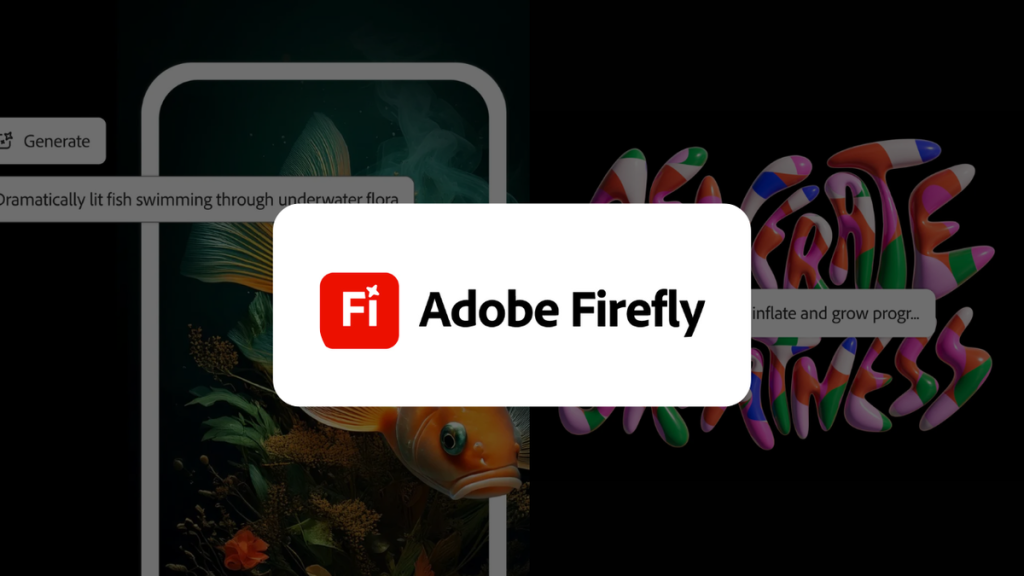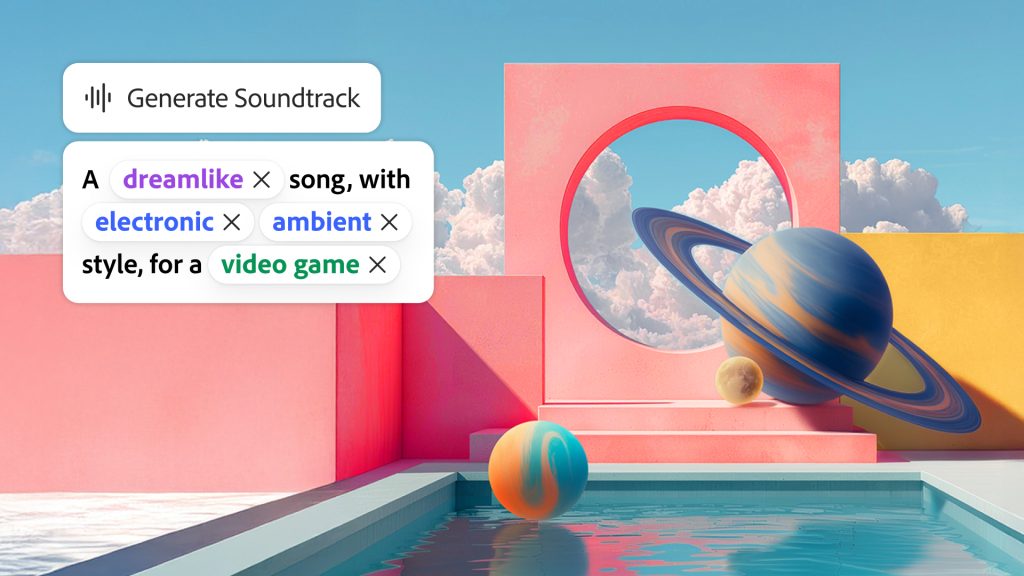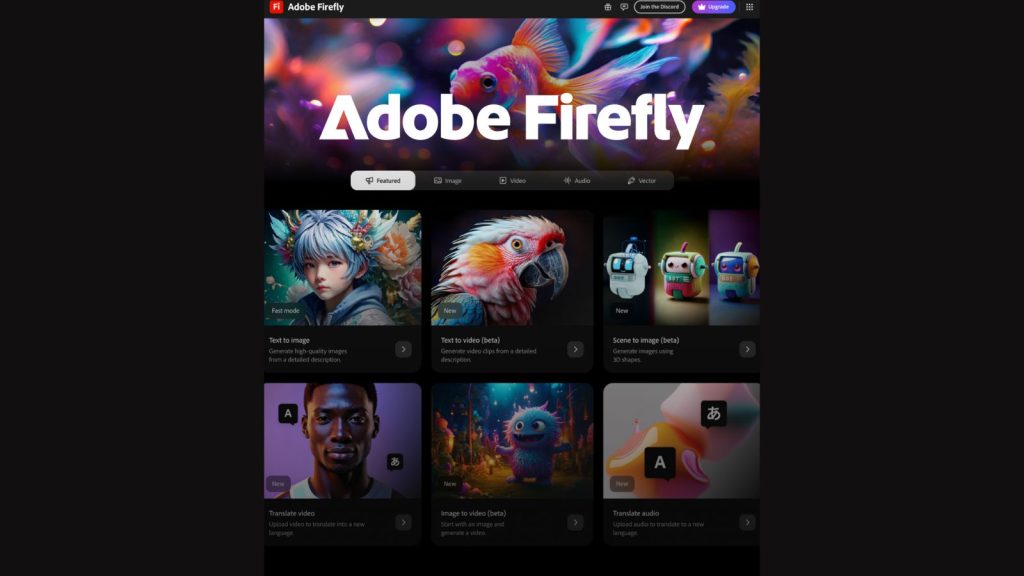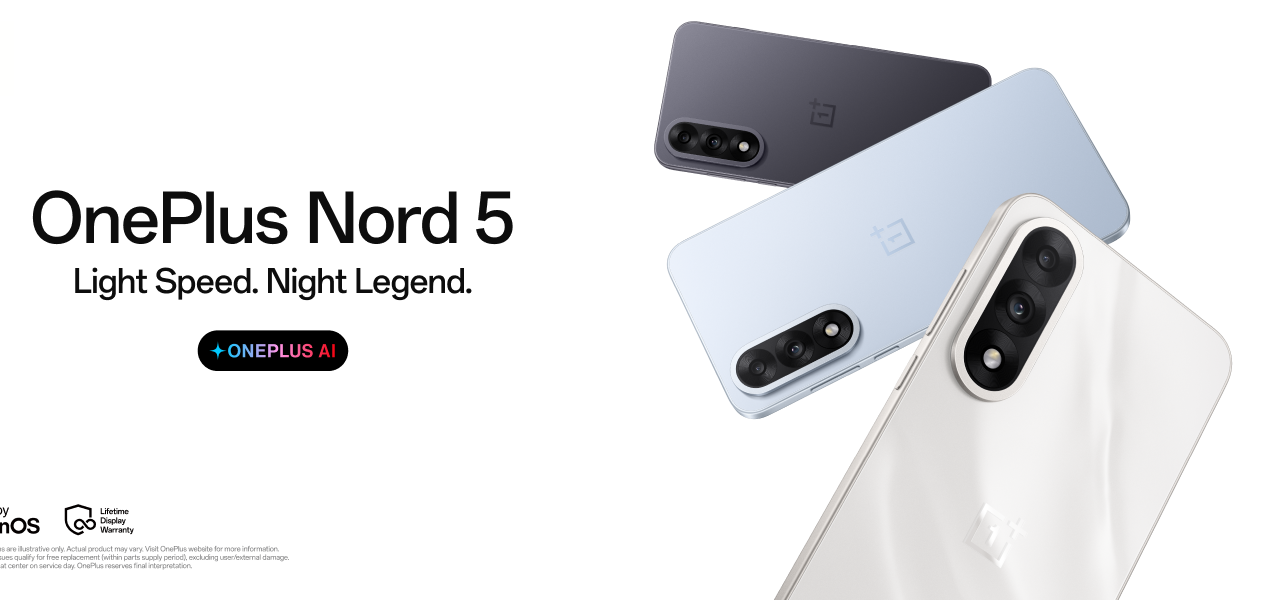Introduction: The Evolution of Creativity’s Engine
For the last two years, Adobe Firefly AI has redefined graphic design, turning simple text prompts into stunning, commercially safe images and text effects. It served as a powerful, dedicated “Creative Copilot” within the Adobe ecosystem, but primarily for static media.

That era is over.
At Adobe MAX 2025, the company unveiled the most significant expansion of the Firefly platform to date, pushing its generative capabilities deep into the dynamic realms of video and audio creation. This move is not just an update; it’s a strategic declaration that Firefly is ready to accelerate every corner of the post-production workflow, ensuring that the next wave of content—from blockbuster trailers to social media reels—will be AI-assisted.
For digital news creators and storytellers at GrabIND, these AI tools for video and audio represent a seismic shift in efficiency, promising to cut weeks off project timelines and unlock creative concepts previously deemed too costly or complex.
The New Frontier: Firefly’s Dynamic Media Arsenal
Adobe’s expansion addresses the industry’s most persistent bottlenecks: the time and resources needed for video editing, motion graphics, and sound design. The new generative capabilities are not standalone apps; they are seamlessly integrated features within the familiar Creative Cloud suite, primarily Premiere Pro and After Effects.
1. Firefly for Video: Beyond the Still Image
The biggest announcement is the introduction of powerful Text-to-Video and video manipulation tools. While full, complex, minute-long generative video remains a distant goal for most AI models, Firefly focuses on essential, time-consuming tasks within the professional workflow.
- Generative Scene Filling: Imagine needing to extend a background or remove an unwanted object in a video clip. Firefly can now analyze the surrounding frames and use a simple text prompt to remove or replace objects, maintaining temporal consistency across the entire sequence.
- AI-Powered Coloring and Grading: Achieve cinematic looks in seconds. Firefly can apply complex, professional-grade color grading styles based on a textual description or by referencing a single image, instantly matching the color palette across different shots in a scene.
- Style Transfer & Concept Generation: Apply artistic styles or conceptual filters to existing footage. This allows creators to instantly visualize a scene in a specific aesthetic (e.g., “turn this into a cyberpunk anime”) without hours of manual effect work. This empowers quick iteration and prototyping, crucial for dynamic production cycles.
The video tools are designed not to replace the editor, but to act as a hyper-efficient assistant, executing laborious tasks in seconds rather than hours, thereby freeing up time for deeper creative decisions.
2. Generative Audio: Sound Made Easy
Sound design is often the overlooked hero of digital content. The process of finding the perfect sound effect—a specific type of creaking door, a distinct engine rumble, or a subtle ambient tone—can involve sifting through massive, expensive audio libraries.

Adobe’s new generative audio tool solves this by introducing text-to-sound effects generation.
- Prompt-Based Sound Creation: A creator simply types a prompt like, “Generate the sound of rain falling on a metal roof, followed by a distant thunder clap,” and Firefly instantly synthesizes a studio-quality sound effect.
- Audio Restoration and Enhancement: Beyond creation, the tools also offer advanced AI-powered capabilities to clean up dialogue tracks, remove noise, and automatically match a voice track to a given environment, ensuring high fidelity and consistency across disparate recordings.
This marks a significant step forward, making professional-grade sound design accessible and immediate, whether you are creating a simple explainer video or a complex short film.
The Unwavering Core: Ethical AI and Enterprise Power
Adobe’s strategy is built on two pillars that directly appeal to professionals and large organizations: ethical training and deep integration.
Ethical Foundation for Commercial Use
A core differentiating factor of Firefly is its training data. Adobe strictly uses:
- Adobe Stock content.
- Licensed content.
- Public domain content where copyright has expired.
This commitment means that content generated by Adobe Firefly AI is commercially safe, mitigating the intellectual property (IP) risk that plagues other popular generative models. This ethical standard is particularly crucial for large enterprises and news organizations like GrabIND, where content provenance and legal safety are paramount.
Creative Cloud and Enterprise Integration
The power of this new wave of Firefly features comes from its deep native integration. Unlike using standalone AI tools, these capabilities appear as familiar buttons and panels within the software professionals already use: Photoshop, Illustrator, Premiere Pro, and After Effects. This seamless workflow is what turns a powerful AI model into a practical, everyday tool for millions of Creative Cloud subscribers. Furthermore, Adobe is actively working on new features tailored for enterprise customers, focusing on scaling content creation while adhering to brand guidelines and safety parameters.
The Impact on the Digital News Landscape
For news organizations and digital publishers, the expansion of Adobe Firefly AI is a game-changer for content velocity:

- Faster Visualization: When covering breaking news, reporters can use Firefly to quickly generate conceptual visuals or short video clips to illustrate complex data points or hypothetical scenarios, significantly enhancing reader and viewer comprehension.
- Higher Production Value: Affordable, fast access to generative audio and advanced video editing means GrabIND can produce video content with studio-quality polish, even under tight deadlines.
- Efficiency in Repurposing: A static news graphic can instantly be converted into an animated video sequence with synchronized, professionally designed sound effects, allowing for rapid repurposing across multiple digital platforms.
This shift, heralded at Adobe MAX 2025, is moving the needle from AI assisting creativity to AI driving creativity. It signals that the biggest competitive advantage in the digital sphere will soon be how effectively a creator integrates generative models like Firefly into their daily workflow. The future of content is not just faster—it is more imaginative, accessible, and grounded in ethical production standards.
Resources & External Links
To explore the details of the Adobe Firefly expansion and the announcements from Adobe MAX 2025, refer to the sources below:
| Resource Description | Link |
| Adobe’s Official MAX 2025 Firefly Announcements | https://news.adobe.com/news/2025/10/adobe-max-2025-firefly |
| Firefly Expands to Audio and Video Creation | https://dig.watch/updates/adobe-firefly-expands-with-new-ai-tools-for-audio-and-video-creation |
| Adobe Firefly Introduces Studio Quality Audio/Video | https://www.business-standard.com/technology/tech-news/adobe-firefly-introduces-studio-quality-audio-and-video-tools-for-creators-125102900604_1.html |
| Firefly New AI Tools for Video, Audio, Images | https://itbrief.com.au/story/adobe-firefly-announces-new-ai-tools-for-video-audio-images |
| GrabIND Digital News | https://grabind.com/ |






